Stren Series preview: Central Division
Central Division slate of events offers feast and famine for bass fishermen
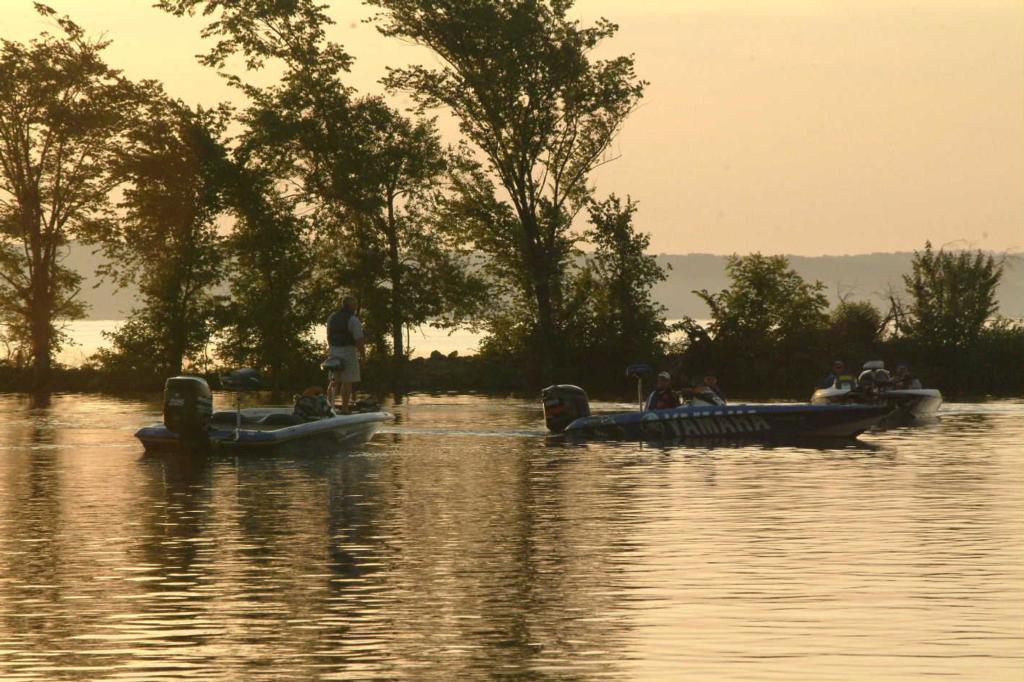
Now that the Stren Series Central Division’s Texas-heavy 2006 schedule has given way to a full-blown Texas Division in 2007, the Central Division returns to some of its old haunts this year, like Kentucky Lake and Lake of the Ozarks. With a schedule that runs from early March to late September, anglers will enjoy everything from prespawn to late-summer patterns as they compete this season.
Kicking things off is a tournament on Bull Shoals that will likely frustrate anglers as they hunt for suspended fish that have been confused by recent weather patterns. But all will be forgiven when they hit Kentucky Lake in May and enjoy a plentiful shallow-water largemouth bite.
The Stren Series returns to the Columbus Pool in early June, and according to local pro Will Dupler, the timing is just right for good bass fishing in Mississippi. The season will end on picturesque Lake of the Ozarks, where competitors will get one last chance at fishing a summer pattern before a chilly fall sets in.
Overall, the schedule promises a season full of bass with a few challenges thrown in to make it interesting. Perhaps the toughest one of all is the first event, as the Stren Series has never before visited Bull Shoals.
Bull Shoals
Bull Shoals, Ark.
Feb. 28-March 3
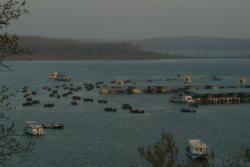 Central Division competitors may have a tough go of it on Bull Shoals, says local pro Jim Nolan. Recent weather patterns and general conditions have combined to throw the bass into a tizzy, a situation that likely will not improve in the days leading up to the event.
Central Division competitors may have a tough go of it on Bull Shoals, says local pro Jim Nolan. Recent weather patterns and general conditions have combined to throw the bass into a tizzy, a situation that likely will not improve in the days leading up to the event.
“Right now the water level has shot up pretty high because of the rains we’ve had the last couple of weeks, so that changes the attitude of the lake a lot,” Nolan said in the week leading up to the tournament. “The Corps of Engineers doesn’t like the water high this time of year, so they’re going to drop the lake as fast as they can. We can expect the lake to drop pretty fast, and the fish will not stabilize by the time the Stren Series gets here.”
With a recent winter cold snap broken by temperatures in the mid-to-upper 60s, Nolan says that Bull Shoals bass will begin breaking up and scattering throughout the lake. They do this, he says, because of a lack of adequate structure.
“If it had stayed cool, you’d find fish schooled up, but they’ll be scattered, which will make a tougher tournament for all of us,” Nolan said. “Bull Shoals is a clear lake, and the fish have the habit of suspending over nothing. All the stuff that used to be along the shorelines has got a lot of fungus and stuff in the limbs, and the fish can’t breathe it. They can’t relate to it anymore, so they just kind of go out and suspend.”
Without obvious hiding spots like brush piles, Central Division anglers will have a tough time locating the fish. Nolan says competitors better be ready to fire up the depth finder.
“Bull Shoals is kind of a tough lake anyway,” he said. “It’s hard to pinpoint what they do and where they go. You have to watch your depth finder really hard and find new brush piles or put some in yourself. Stay with the new stuff.”
Not only are the Bull Shoals bass tough to find, but when they are caught, they’re usually not exactly trophy bass. Overall, what this tournament is going to require a lot of is patience.
“They bite really slow,” Nolan said of Bull Shoals bass. “It’s not a massive, 20-pound-stringer type of lake. You break out your light line and you go really slow, and you accumulate 10 to 12 pounds and hope to catch one really nice fish to get a 16-pound limit.”
All three species of bass can be caught on Bull Shoals, with smallmouths being the best for good limits. In fact, the smallmouths in Bull Shoals just keep getting better, Nolan says, as limits totaling in the teens are becoming more and more common thanks to the smallmouth population.
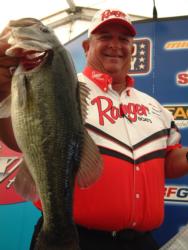 With that in mind, a good catch on Bull Shoals will average about 9 or 10 pounds, though Nolan says it is possible for someone to catch a 20-pound stringer. But on the rare occasion that does happen, the lucky angler can’t expect to be lucky enough for it to happen again.
With that in mind, a good catch on Bull Shoals will average about 9 or 10 pounds, though Nolan says it is possible for someone to catch a 20-pound stringer. But on the rare occasion that does happen, the lucky angler can’t expect to be lucky enough for it to happen again.
“He’ll have one good day of 16, 17, 18 pounds, and maybe he’ll luck out and have 22 pounds,” Nolan says of the winner. “It’s very unusual to have two 20-pound stringers in a row. If a person averaged 13 to 14 pounds a day, I think he could win the tournament.”
Bull Shoals is also a very deep lake, though the depth at which the bass will be found is relative. If temperatures had stayed cold, Nolan says they would likely still be found deep – 65 to 70 feet down. But with the recent warmup, Nolan expects the bass to be inching out of their winter stage, swimming anywhere from 55 feet to the banks. As temperature affects depth, so does temperature affect presentation.
“During the cold weather, when the water temperature is in the upper 40s and 50s, your jerkbaits will be your prime baits along with crankbaits,” Nolan said. “Jigs are also good, working them really slow. If it warms up, you’re looking at maybe a spinnerbait bite, slow-rolled off the bank. Even some swimbaits, drop-shots and little worms – shaky heads – can be good.”
Overall, Nolan says, on Bull Shoals in early March, it’s all a matter of timing.
“The key is to fish very slow and very precise,” he said.
Kentucky Lake
Benton, Ky.
May 2-5
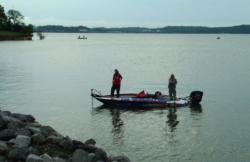 The Stren Series is visiting Kentucky Lake a full month earlier than usual, which means the standard ledge bite won’t quite be up to its full potential yet. According to Kentucky Lake stalwart Sam Lashlee of Camden, Tenn., that means this year’s event may not be as dominated by locals as it has been in the past.
The Stren Series is visiting Kentucky Lake a full month earlier than usual, which means the standard ledge bite won’t quite be up to its full potential yet. According to Kentucky Lake stalwart Sam Lashlee of Camden, Tenn., that means this year’s event may not be as dominated by locals as it has been in the past.
“The only way it could turn into a ledge bite is if from here on out it stays warm and the fish go on beds in March,” Lashlee said in late February. “The first of May, the largemouths will not be up on the ledges, but it ought to be a good tournament. It won’t be dominated by the locals. It’ll be a tournament where everybody has a fair chance of winning.”
With the largemouths found shallow and even still on beds in early May, those fishing the ledges will have to settle for smallmouths and Kentuckys. That said, never discount a feisty smallmouth.
“You’ll have a lot of smallmouths that will be off the beds, and they’ll be tearing it up,” Lashlee said. “I’m sure there will be a couple people who will do well fishing wide for smallmouths. If the smallmouths are in a stage where they’re coming off the beds, it could very easily be won with smallmouths. You’ll still have somebody find a school of fish out wide somewhere on the ledges, but whether or not that will be enough to win, I don’t know. If it’s a mixed bag of smallmouths, largemouths and spots, it could win. I’m not saying it can’t be won out wide. But the majority of the largemouths will still be shallow.”
So with the ledges probably not a factor, Lashlee turns to the river islands in early May, and he expects fish to be caught out of Barkley as well as Kentucky Lake.
“Barkley could be really, really hot,” he said. “The fishing on the river islands and up on the Tennessee-Kentucky line will be (good). A lot of people that will be flipping or throwing a topwater have a great chance of winning. There will still be some females on beds, but for the most part, a lot of the fish will start moving toward the river, and they’ll be feeding really good. The river islands might be a big thing. That’s one of the things I would do – check the river islands on both Kentucky and Barkley.”
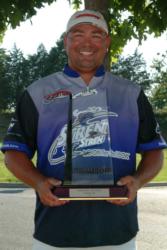 And in keeping with Kentucky’s good reputation, Lashlee expects to see 20-pound bags every day. However, those kinds of weights probably won’t be as prevalent as they would be a month or so later when the fish are on the ledges.
And in keeping with Kentucky’s good reputation, Lashlee expects to see 20-pound bags every day. However, those kinds of weights probably won’t be as prevalent as they would be a month or so later when the fish are on the ledges.
“I think you’re going to see consistent 15-pound bags from guys fishing shallow,” he said. “The water temperature ought to be in the low 70s to mid-70s. The fish are looking for cooler areas. That’s why river islands are so good – they’re still getting current but they’re shallow-oriented fish.”
Lashlee said last year at that time, he was catching 50 bass a day flipping and throwing spinnerbaits and buzzbaits. For this tournament, he says a spinnerbait would be one of his top choices, as well as 1/2-ounce black and blue jigs.
“In shallow water, I also think you could catch them on any kind of topwater or buzzbait,” he said. “Going deep on the smallmouth, it’s a Strike King Series 5 in fire tiger, no doubt about it. I also like a Carolina rig.”
Columbus Pool
Columbus, Miss.
June 6-9
Of all the fishable water along the Tenn-Tom Waterway, the biggest and most popular is the Columbus Pool, an 8,900-acre pond situated in Columbus, Miss., hence the name. When the Stren Series last 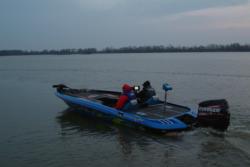 visited the Columbus Pool back in 2005, it was in the chill of mid-March, and weights were nothing if not inconsistent. This time around, the time frame is early June, and according to local pro Will Dupler, the only time better than June to fish the Columbus Pool is the spawning months.
visited the Columbus Pool back in 2005, it was in the chill of mid-March, and weights were nothing if not inconsistent. This time around, the time frame is early June, and according to local pro Will Dupler, the only time better than June to fish the Columbus Pool is the spawning months.
“It’ll be a postspawn tournament, and the water level should be stable,” Dupler said. “The fish will be starting to move from the back waters out toward the river channels. The postspawning big fish will be biting again by June.”
Overall, this event should prove to be a pleasant one, with a good bite forecasted and typically mild temperatures to enjoy. Dupler says the area experiences its big rains in April and May, and with those out of the way, all systems should be go for a superb event in Columbus.
“Unless we get unusual rains, the river should be in really good condition,” he said. “Usually by June, the river is in really, really good shape.”
Dupler expects a hot spinnerbait and buzzbait bite in the mornings, followed by a solid crankbait bite in the afternoon. Carolina rigs will be good as well. To win, Dupler expects to see a 55- to 60-pound cumulative weight. To make the cut after three days, Dupler says it’s going to take nearly 30 pounds.
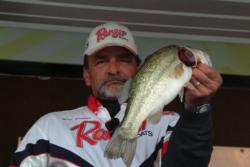 “It should be a really healthy weigh-in,” he said. “Our aquatic growth by then is already up and the fish are sitting in it. We’ve got a lot of moss, coontail and that kind of thing. That makes it better, especially for a topwater.”
“It should be a really healthy weigh-in,” he said. “Our aquatic growth by then is already up and the fish are sitting in it. We’ve got a lot of moss, coontail and that kind of thing. That makes it better, especially for a topwater.”
Dupler says anglers will be targeting largemouths and spots, and while the Columbus Pool is known as a shallow waterway, Dupler says the fish can be found from 15 to 50 feet of water in the river channels. Off the river channels, it’s basically shallow structure, with fish found in depths of 3 to 10 feet.
So while things are looking rosy for the Columbus Pool in June, Dupler says one can never get too comfortable on a river system.
“Have a second and a third backup,” he said. “River fish change like a light switch. You may have them piled up on a point, where every cast there’s a fish, but tomorrow may not be like that. If everyone has a plan B everywhere else, here, you need a plan C.”
Lake of the Ozarks
Osage Beach, Mo.
Sept. 19-22
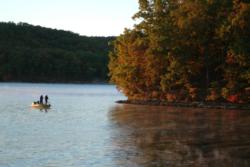 What happens on Lake of the Ozarks in September will depend on the summer, says Dion Hibdon of nearby Stover, Mo. And if you’re planning on catching them, you’d best be heading for the boat docks.
What happens on Lake of the Ozarks in September will depend on the summer, says Dion Hibdon of nearby Stover, Mo. And if you’re planning on catching them, you’d best be heading for the boat docks.
“It should be a good tournament,” Hibdon said. “There’s going to be a lot of fish caught no matter what. There will be a lot of fish on the boat docks. From up the river, they’ll be in 2 feet of water, and down the lake, they might be in 20 feet of water. It kind of depends on the summer.”
If the Ozarks have a dry, low-water summer, the lake fishes deep, Hibdon says. But if the area receives a lot of rain and the water stays dingy, it’ll be a shallow tournament. Nevertheless, the lake is full of bass, and if the water stays low, Hibdon says the key depth is 15 to 20 feet.
“They catch them on big worms and stuff like that around the brush,” Hibdon said of catching low-water bass. “It’s always pretty good – a lot of keepers and a lot of nonkeepers. If the fish are around the shallow boat docks, they can be caught on a variety of baits, from cranking a crankbait around it to throwing a spinnerbait or pitching some sort of soft plastic like a jig or worm.”
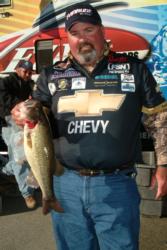 Hibdon says one minor nuisance is leisure-boat traffic if the weather is good, but even then he expects the lake to fish big and the tournament to still be solid. He expects it to take about 15 pounds a day to make the cut and says on a good day, more than 18 pounds can be caught. The first day of fall is the day after the tournament ends, and Hibdon says the bass won’t necessarily be in their fall patterns yet.
Hibdon says one minor nuisance is leisure-boat traffic if the weather is good, but even then he expects the lake to fish big and the tournament to still be solid. He expects it to take about 15 pounds a day to make the cut and says on a good day, more than 18 pounds can be caught. The first day of fall is the day after the tournament ends, and Hibdon says the bass won’t necessarily be in their fall patterns yet.
“It depends on the weather and the water level – more water clarity than water level,” he said. “If the water’s clear, you can catch them good deep. If the water’s not clear, you’re not wasting your time, but you won’t catch them as good. That’s a late-summer deal for Lake of the Ozarks. Fall patterns don’t kick in until October.”
Hibdon says the lake is primarily stocked with largemouths and spotted bass, but that the spots won’t be a factor when it comes to winning a tournament. In addition to the boat docks, where he says the fish are caught 90 percent of the time, Hibdon says the key to fishing Lake of the Ozarks is brush.
“Brush has more to do with it than anything,” he said. “It’s finding brush at the right boat docks at the right depth of water. Up the river they’ll be turning into a fall pattern, but for the most part, it’ll be a late-summertime deal, which is something around brush.
“It’s a good time of year to be here. The lake’s really, really thriving, and there are lots and lots of good keeper bass.”